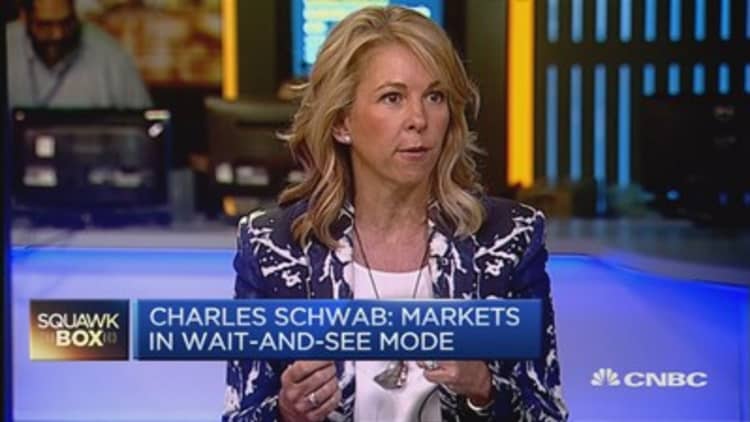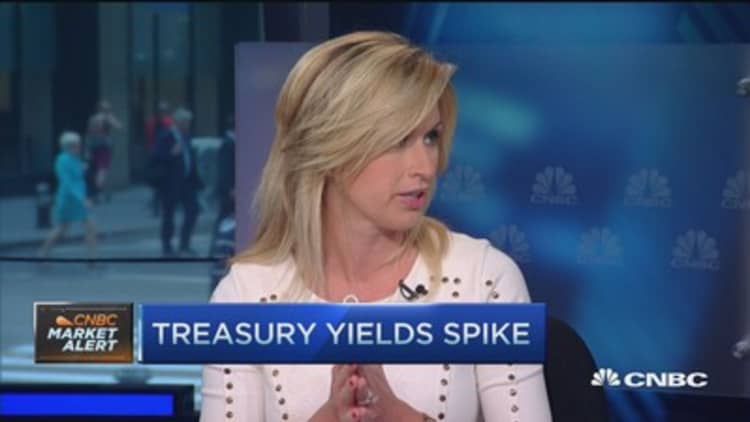
Creeping bond yields in Europe infected the U.S. Treasury markets this week, sparking a global selloff in equities, but one analyst has warned that this could simply be a "dress rehearsal" for future chaos for fixed income assets.
Analysts have given several reasons for the global selloff in bond markets, including central bank activity and increased inflation expectations due to the rise in oil prices. However, for Jim Reid, head of global fundamental credit strategy at Deutsche Bank, it's liquidity – how easy it is for traders to buy and sell assets without affecting their price – which has been key.
"What most traders have said is that liquidity is awful. Big moves are possible on relatively low or average volumes." Reid said in a note on Tuesday morning.
"I can't help thinking that when the next downturn hits, the lack of liquidity in various markets is going to be chaotic. These increasingly regular liquidity issues we're seeing might be a mild dress rehearsal."
A lack of liquidity has many market participants fretting that they could easily get caught on the wrong side of a hefty move in a fixed income asset.
He highlighted that additional money in the system – from quantitative easing – combined with low trading liquidity -- due to increased banking regulations – was creating air pockets, which can burst.
"The former encourages investors to move in a similar direction until overheating occurs, with the latter then creating problems when they want to collectively lighten up," he said.
Benchmark Treasury yields - which move inversely to prices - topped 2.3 percent for the first time in five months on Tuesday morning, amid a global bond selloff. This continued an overnight surge with the U.S. thirty-year bonds yielding 3.10 percent.
Meanwhile, Australian and Japanese bond yields climbed overnight, while German 10-year Bunds yielded 0.703 percent on Tuesday morning, up from a close of 0.599 percent. The latter have been creeping higher for the last two weeks after nearing zero on the back of asset-purchases this year by the European Central Bank.
Liz Ann Sonders, senior vice president and chief investment strategist at Charles Schwab, told CNBC Tuesday that U.S. investors were becoming increasingly frustrated with these bond market moves.
"(This) hasn't been supported by what's going on in the economic landscape (in the U.S)," she said, explaining that European yields were driving the move.
Meanwhile, Bill Blain, senior fixed income broker at Mint Partners, spoke of a fear of "liquidity traps" in his morning note on Tuesday, echoing Deutsche Bank's Reid.
He also highlighted investor uncertainty over global growth and the lack of alternative attractive opportunities in "overblown stock markets."

Sovereign debt markets had likely entered a "proper bond bear market," Blain added.
Fixed income has essentially been on a 20-to-30-year bull run, and yields have been increasingly squeezed lower as several global central banks entered the debt markets.
Market watchers are now anticipating a move away from the bond markets as central banks - notably the U.S. Federal Reserve - look to ease off from their ultra-loose monetary policy.
However, Lothar Mentel, an analyst from Tatton Investment Management, isn't quite buying that theory just yet. He predicted in a note last week that the recent selloff was just a "wash-out of the speculative brigade of bond investors."
Read MoreBond yields spike, market looks forcapitulation
"I see this as the first episode of market volatility that we anticipate to be a more regular occurrence over the coming months as we get ever closer to the first rate rise since the financial crisis," he said.
"(I) would not yet go as far as saying that this was the definitive turning point to the 35 year bond bull market."
—CNBC's Katy Barnato contributed to this article.


